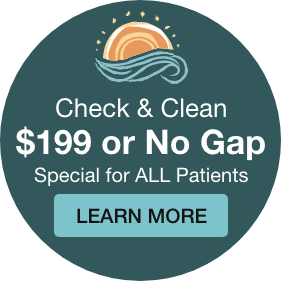 It can be stressful to think about any dental procedure needing anesthesia or sedation in the weeks and days leading up to the day. And while we take our jobs very seriously, we want you to feel at ease about the various types of sedation and anesthesia that may be used to keep you comfortable while the dentist and their team get to work to improve your smile.
It can be stressful to think about any dental procedure needing anesthesia or sedation in the weeks and days leading up to the day. And while we take our jobs very seriously, we want you to feel at ease about the various types of sedation and anesthesia that may be used to keep you comfortable while the dentist and their team get to work to improve your smile.
Types of Anesthesia and Sedation Available
Depending on the dental work you need to have done, what anesthesia or sedation you’ll be given will vary.
Local Anesthesia: As the most common type used, this is the choice for routine tooth extractions. Your gums around the tooth will be numbed typically with a gel, and from there you’ll be injected with an anesthetic directly into the area around the tooth to be extracted. Local anesthesia numbs the specific area, so the patient doesn’t feel pain during the extraction, although they may still feel pressure and movement.
Nitrous Oxide (Laughing Gas): Nitrous oxide is a gas that can be inhaled through a mask to induce a relaxed, euphoric state. It is often used in combination with local anesthesia to reduce anxiety and enhance pain management.
Oral Sedation: This approach involves taking a prescribed sedative pill before the procedure. This type of sedation can help reduce anxiety and make the patient feel drowsy and relaxed but still conscious. The patient may need someone to drive them to and from the appointment, as the effects can last for several hours.
Intravenous (IV) Sedation: IV sedation is administered through a vein, allowing the dentist or oral surgeon to adjust the level of sedation during the procedure. It can range from moderate sedation (conscious but very relaxed) to deep sedation (near unconsciousness).
IV sedation is often used for more complex or lengthy extractions and is typically performed by an anesthesiologist.
General Anesthesia: This style of anesthesia induces unconsciousness and is rarely used for routine tooth extractions. It’s reserved for complex or extensive oral surgery procedures, such as impacted wisdom teeth removal or corrective jaw surgery.
General anesthesia is administered and monitored by an anesthesiologist, ensuring the patient remains asleep throughout the procedure.
Have No Fear – We’re Here to Help!
Getting “put under” is really nothing to worry about. You’ll be kept comfortable and pain free, allowing our dental professionals to do their job efficiently and effectively, while we take care of your dental health care needs. Contact us today if you have any questions about your upcoming dental surgery, or need to schedule an appointment for a checkup!

